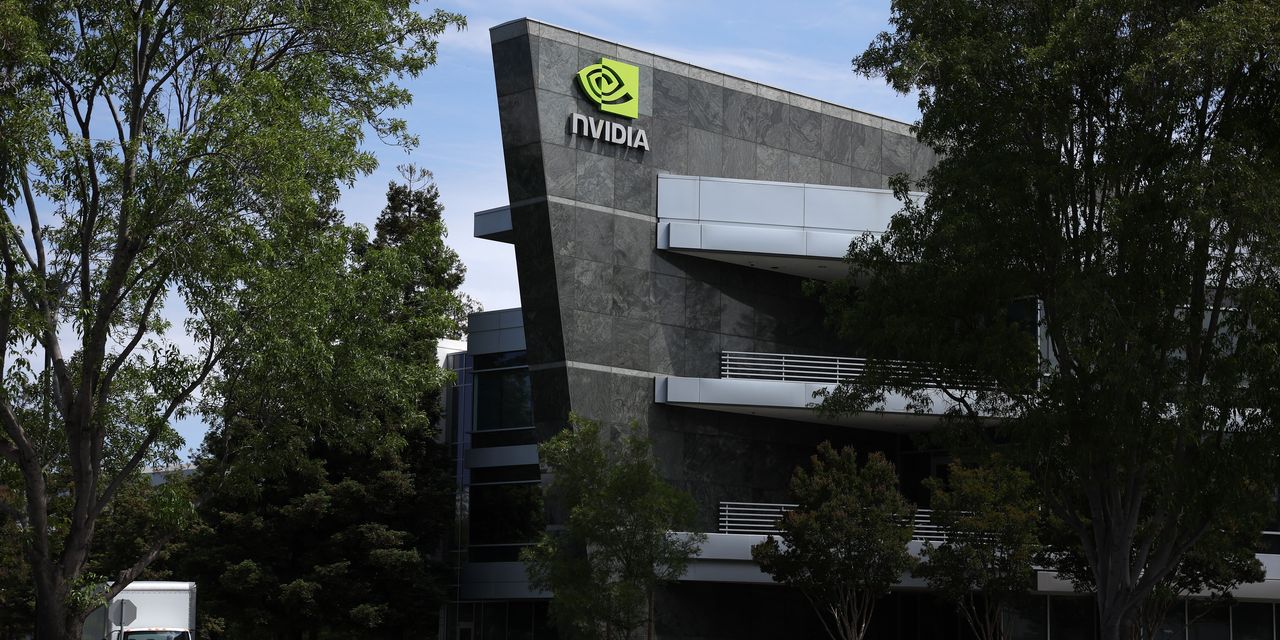Nvidia
had its AI moment and the stock went bananas. Wall Street is frantically raising estimates, leaving investors wondering if the stock is too expensive, too cheap, or valued just right. It’s hard to know what to do with shares now. The stock charts are as good a place as any to start figuring that out.
Looking at stock charts, or technical analysis, is one tool in an investor’s, or a trader’s, toolbox. Charts can tell a story about sentiment and when it’s a little too euphoric or too miserable.
In the case of
Nvidia
(ticker: NVDA), euphoria is building. Coming into Wednesday trading, shares were up almost 30% over the past five days. Nvidia was responsible for more than its fair share of the
Nasdaq Composite’s
3% gain over the same span. Nvidia, of course, isn’t a
Dow Jones Industrial Average
component, which was off 0.5%.
The reason for improving sentiment is easy to pinpoint. Nvidia told investors on May 24 that AI-related business was booming. Fiscal second-quarter sales are expected to be about $11 billion. Wall Street was projecting closer to $7 billion.
And after May 24, analysts moved calendar-year 2024 sales estimates to about $51 billion, up from $37 billion. Earnings-per-share estimates for 2024 are approaching $10 from less than $6.
It’s all been a lot for investors to digest. The good news is they probably have time to catch their breath. Shares were down about 2.5% in morning trading Wednesday and the stock looks way overbought.
“Way” isn’t really a technical term, but Nvidia’s relative strength index, or RSI, is at about 85. The RSI can, essentially, fluctuate between zero and 100. A high number means the stock has been going up a lot, quickly. In other words, a lot of good news reflected in shares. A reading above 70 is usually considered overbought, which can mean shares are due for a pause.
Tuesday’s “high was possibly [a] peak, at least for some time going forward,” wrote Rick Bensignor, founder of The Bensignor Group and former
Morgan Stanley
chief market strategist, in a Wednesday research note, pointing out that “Elliot waves,” another technical indicator, point to $415 being a top in the stock for now.
Elliot waves look a little like mountain peaks and valleys, kind of like using nature to predict natural price movements of stocks. They might seem obscure, but when a stock goes parabolic it leaves everyone struggling for answers. Waves might suggest the stock could travel back toward $350 while things cool off.
Market technician Katie Stockton, who is also founder of Fairlead Strategies, sees some support around $366 a share.
“So, no, I am not now a buyer of Nvidia,” added Bensignor. “And frankly, I have no issue with selling covered calls in it or even reducing some outright long exposure.”
A covered call option is a strategy where an investor that owns a stock sells a call option (the right to buy that stock at a fixed price) to another investor. Covered call selling takes advantage of price volatility and generates some income for the investor. The risk is that the stock trades above the call option strike price and the call seller loses that upside, foregoing some profits on their original position.
Bensignor isn’t making a fundamental call or predicting where AI can take Nvidia sales in the future. Selling a little when stocks rise a lot quickly is a good idea, generally speaking. How much to sell really depends on the type of investor. Traders will sell more. Investors in it for the long haul will sell less.
Write to Al Root at [email protected]
Read the full article here


